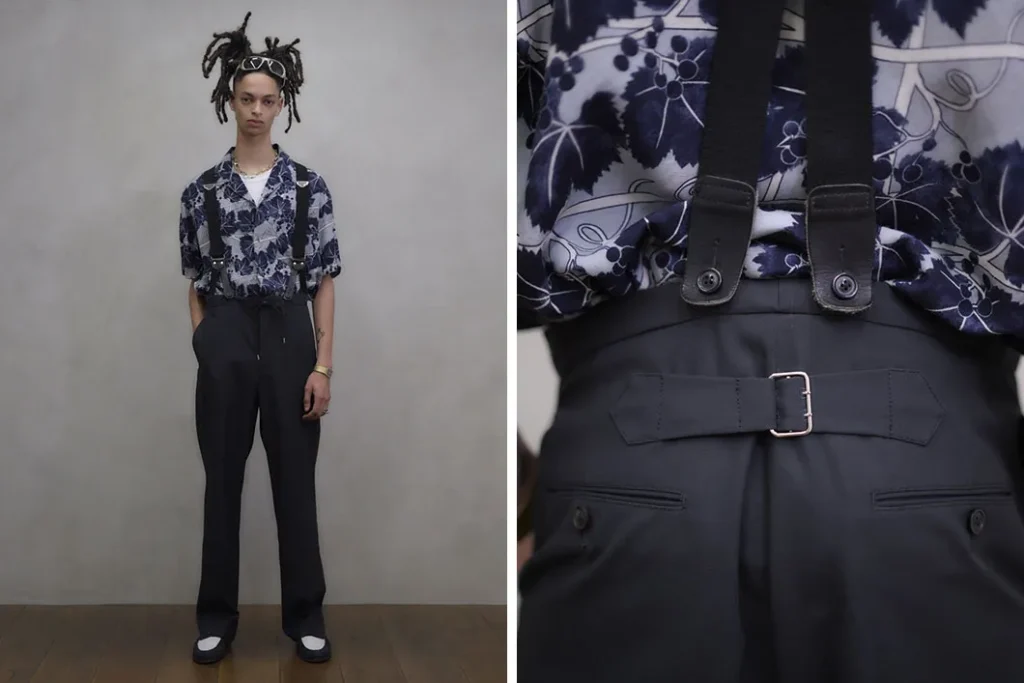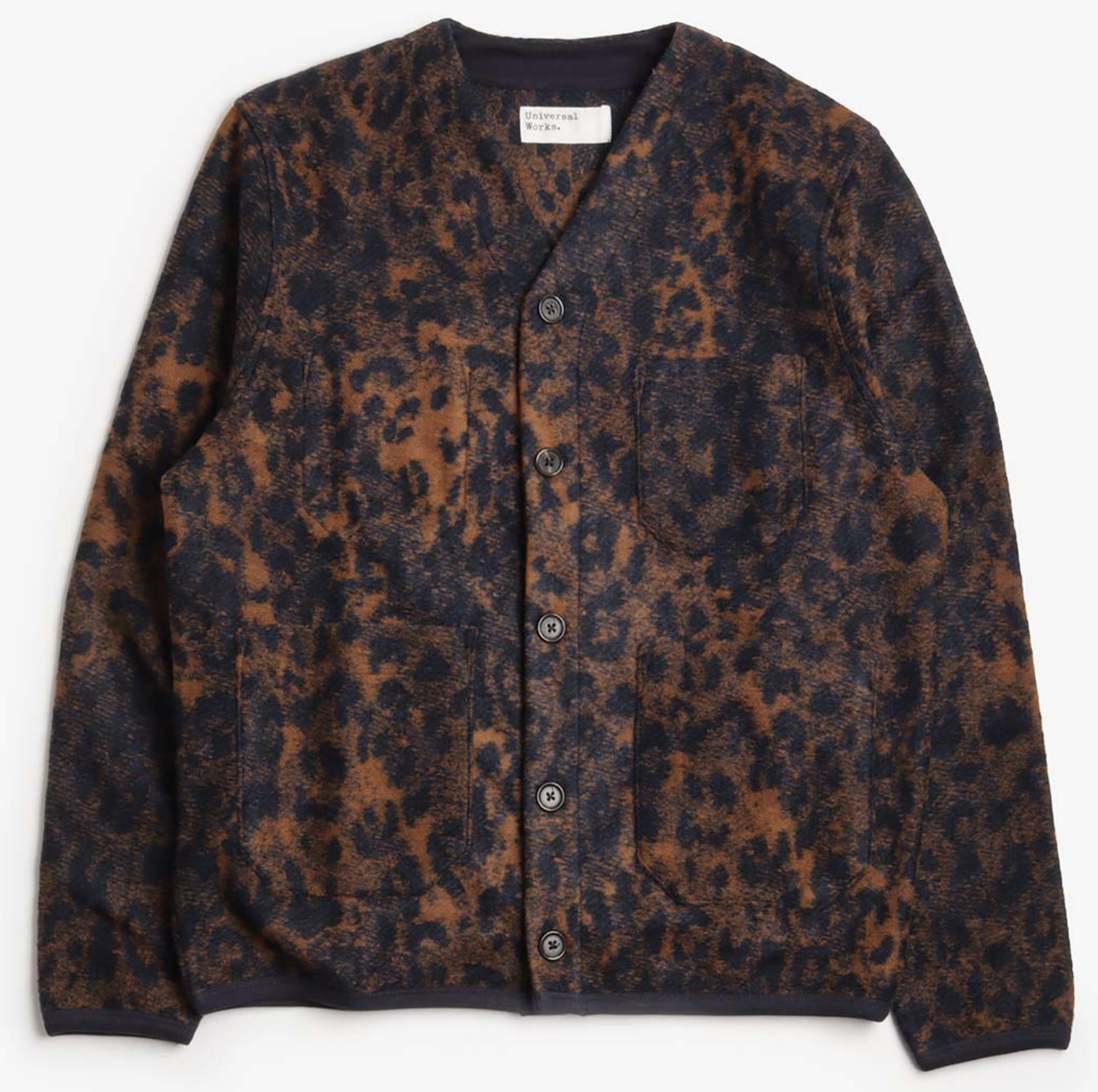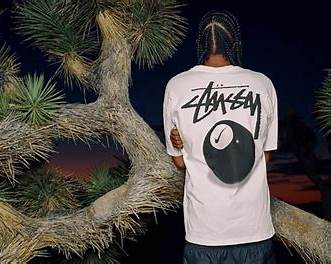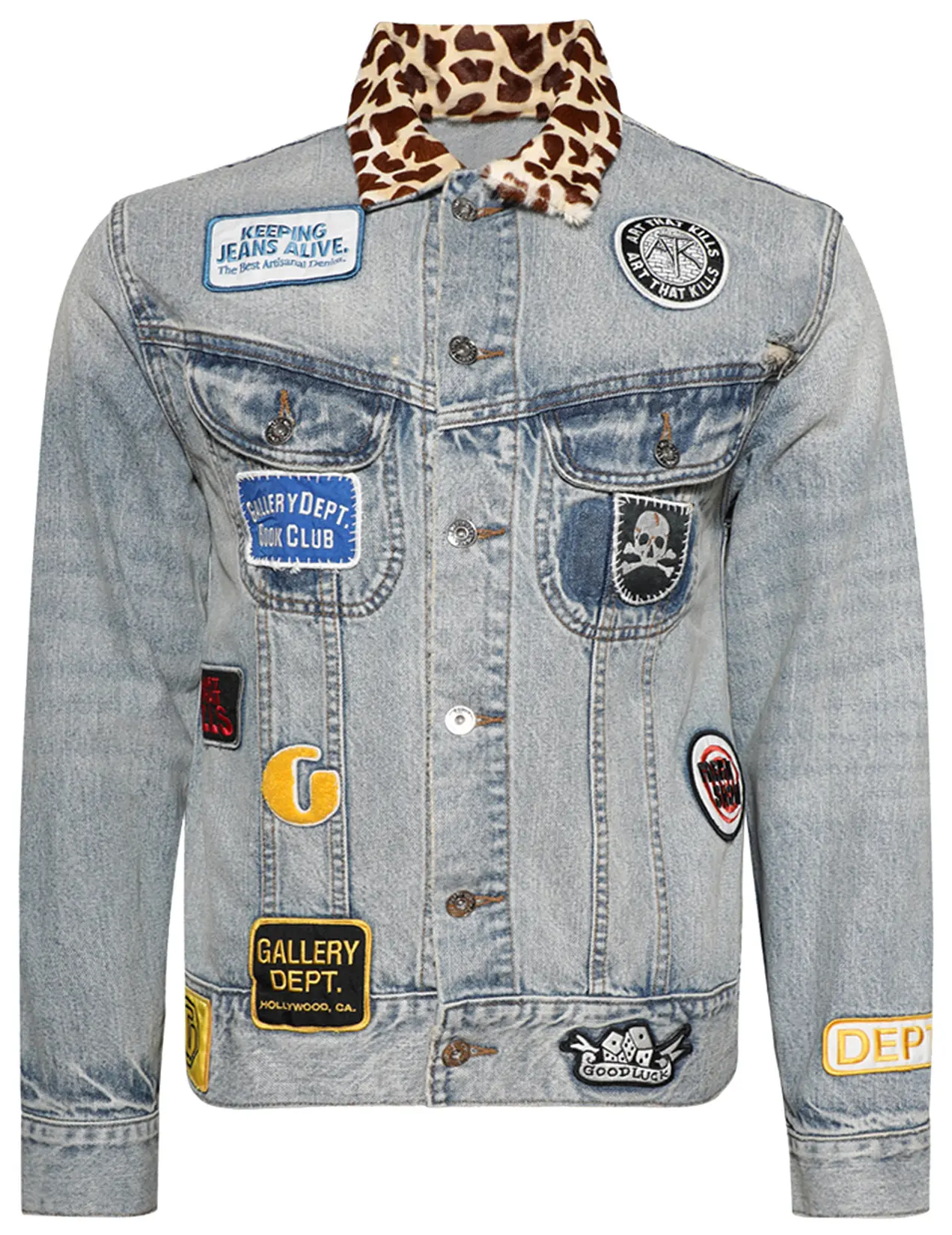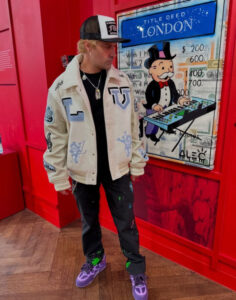the japanese label unused has long been one of tokyo’s quietest but most consistent forces in contemporary menswear. established in 2002, it operates around an almost philosophical concept: to dismantle preconceived frames of design and create forms that exist outside the immediate moment. for over two decades, unused has developed a wardrobe language that merges craftsmanship, subtle innovation, and understated confidence.
its guiding statement, “to touch the past and the memory in the future,” captures the timelessness of its ethos. the brand’s pieces are never loud, never trendy, yet always deeply considered — from the precision of a hemline to the slight weight of a cotton duck cloth.
with the arrival of spring/summer 2026, unused reaffirms its belief in clothes as living, evolving companions. though the collection is not accompanied by the theatricality of runway excess, its narrative continues to unfold through texture, silhouette, and care.
brand heritage and design identity
unused’s character is best understood through what it refuses to be. it rejects overt branding, seasonal gimmicks, or transient collaborations. instead, it orbits around clarity of form and functionality refined by years of subtle experimentation.
on the brand’s official platform, unused explains that it “aims at products that touch the past and the memory in the future.” this poetic statement manifests in garments that feel both familiar and future-proof — shirts that recall traditional tailoring but hang differently, trousers that carry the weight of workwear but move lightly, coats that express restraint rather than volume.
the label distinguishes between white label garments (pre-washed and preshrunk) and black label garments (unwashed and raw). this not only demonstrates material honesty but invites the wearer to engage with the garment’s evolution. the repair service offered to original buyers underscores a philosophy of longevity rarely seen in modern retail: clothes meant to be worn, not consumed.
unused occupies a rare intersection between streetwear ease and artisanal precision. its mood recalls the post-yohji generation of japanese minimalism — contemplative, effortless, but still tactile.
the global context of ss26
the fashion world heading into spring/summer 2026 is defined by a renewed appreciation for wearability and practicality. gone are the bombastic experiments of post-pandemic seasons. instead, designers are rediscovering the allure of movement, lightness, and craft. tokyo’s ss26 presentations have leaned into this spirit: function refined through quiet design.
globally, there is a turn toward materials that age gracefully. sustainability is no longer a buzzword but a baseline expectation. fabric provenance, repairability, and tactile longevity are integral to the conversation. unused — with its “limited lifetime quality” and built-in repair ethos — finds itself perfectly aligned with this cultural shift.
within japan, fashion consumers continue to blend streetwear practicality with tailored sophistication. the modern tokyoite’s wardrobe is modular: a duck-cloth overshirt paired with relaxed trousers, sneakers that complement rather than define the outfit. unused speaks directly to this kind of functional modernism, offering the understated assurance that the garment will simply work — aesthetically, structurally, and emotionally.
the direction of spring/summer 2026
unused’s ss26 collection signals a thoughtful return to tactile realism. the pieces listed through the brand’s communications — the duck button-down shirt, border short sleeve tee, and double-knee duck pants — reveal a renewed fascination with the textures of workwear reimagined for contemporary life.
the use of duck cloth, a heavy cotton canvas associated with durability, suggests an exploration of weight and density in a season typically marked by lightness. unused treats this contradiction as an opportunity: summer garments that don’t disappear but endure.
the border short sleeve tee hints at nostalgia for pre-digital simplicity — the kind of striped cotton shirt once ubiquitous in japanese casualwear of the 1990s. reimagined in finer materials and a relaxed cut, it becomes a contemporary uniform rather than a retro gesture.
the double-knee pants extend the dialogue between work and refinement. reinforcement — a detail borrowed from utilitarian trousers — becomes an aesthetic statement. instead of performative distressing, unused’s wear patterns will come through time, through friction, through use.
together, these pieces tell a story of intentional durability — the belief that beauty comes not from perfection, but from continuity.
View this post on Instagram
silhouette, fabric, and texture
unused’s silhouettes this season reaffirm its foundational grammar of proportion: wide but controlled, relaxed yet architectural. shirts fall with a certain gravity, guided by precise pattern-making. trousers break softly over footwear, maintaining the brand’s unspoken symmetry between formality and comfort.
the choice of duck cloth stands out as both material and metaphor. its resilience speaks to the japanese wabi-sabi appreciation for imperfection and endurance. through washing, sun exposure, and movement, duck fabric records time in creases and tonal shifts — a living memory of use.
other materials, such as mid-weight cotton twills and washed poplins, extend the dialogue between weight and airiness. these fabrics invite wearers to experience temperature and texture as part of design.
the palette is serene: soft off-whites, sand, taupe, weathered navy, olive, and stone. occasional muted lilac or rust tones may surface, echoing the soft bloom of worn fabric rather than synthetic brightness. there is no shock, no spectacle — only harmony.
the philosophy of layering
layering in unused’s ss26 line is less about fashion display and more about rhythm. each piece holds space for another — a tee beneath a shirt, a shirt beneath an overshirt, a jacket atop both. this system builds modularity, allowing garments to adapt to seasons and cities alike.
the brand understands that in japan, spring and summer are not monolithic: morning chill yields to humid afternoons. light layers, breathable fabrics, and subtle transitions define the wardrobe. by emphasizing layering, unused ensures that its clothes remain functional throughout the day and far beyond the season.
the aesthetic of time
time has always been a silent collaborator in unused’s collections. the brand’s approach to clothing resists the immediacy of trend cycles. its garments feel suspended between eras — echoing the tailoring of the past but built for the lives of tomorrow.
spring/summer 2026 heightens this conversation. each stitch, fabric choice, and silhouette becomes a record of process. a duck-cloth shirt softens with every wash. a border tee loses its rigidity as it absorbs body heat and motion. a pair of double-knee pants gains shape from its owner’s movement.
in this way, unused turns the act of wearing into a creative process. the collection becomes not merely something to buy, but something to inhabit.
culture
in a market saturated with collaborations and celebrity campaigns, unused’s independence has become its quiet strength. its refusal to play the marketing game feels almost radical. this honesty resonates with a growing audience weary of performative sustainability and artificial exclusivity.
for fashion editors and stylists, unused provides the kind of integrity that photographs softly but powerfully. for retailers, its consistency creates trust — a rare commodity in an industry addicted to volatility.
culturally, ss26 aligns unused with japan’s ongoing fascination with craft over consumption. the same ethos driving the rise of natural-dye workshops, heritage denim, and upcycled garments also supports unused’s design philosophy.
flow
unused’s restraint presents both its greatest advantage and its most significant hurdle. in an era of instant visibility, subtlety risks being overlooked. its garments demand patience — something algorithms rarely reward.
yet that patience may become its biggest asset. consumers seeking permanence will find in unused a brand that refuses obsolescence. its durability, tactile realism, and repair promise create an emotional contract with the buyer. the brand’s challenge lies in communicating these intangible values across digital platforms that prioritize spectacle over sincerity.
the ss26 collection thus becomes a manifesto for the slow observer — for the wearer who notices the grain of fabric, the fall of a hem, the whisper of cotton brushing skin.
style
the unused wardrobe is an exercise in proportion and feeling. a complete ss26 look might feature the border tee under the duck button-down, sleeves loosely rolled, paired with double-knee pants and soft leather loafers or low sneakers. another ensemble might layer a washed-twill overshirt over a fine-gauge knit, grounding the look in tonal harmony.
these are clothes for people who move through cities rather than pose in them — for those who care how garments live, not how they perform online.
accessories, if any, remain minimal: perhaps a worn leather belt, a small crossbody bag, or a hat in matching duck cloth. every element extends the mood of quiet permanence.
seasonal mood
spring/summer 2026 for unused feels like a pause between breaths — calm, tactile, grounded. rather than chase summer’s exuberance, the collection embraces its stillness. it celebrates the moments before and after heat, the spaces where air meets fabric and fabric meets memory.
the result is not a reinvention but a reaffirmation. unused does not attempt to redefine its philosophy each season; it polishes it. like a craftsman refining the same form over a lifetime, the brand continues its dialogue with imperfection and time.
impression
unused’s spring/summer 2026 collection stands as an emblem of continuity in an industry obsessed with rupture. its garments — quietly proportioned, materially sound, emotionally resonant — remind us that fashion’s truest modernity lies not in novelty but in endurance.
these are clothes meant to be worn, repaired, and remembered. each fabric, from duck cloth to washed poplin, carries both past and possibility. each seam tells the story of design that values silence over noise.
in a world of algorithmic trends and seasonal churn, unused ss26 insists on the opposite rhythm: patience, presence, and persistence. it is japanese minimalism distilled to its essence — not emptiness, but fullness restrained.
for the discerning wearer, unused’s ss26 offering is an invitation to slow down, to observe, and to let time do the finishing.
No comments yet.

